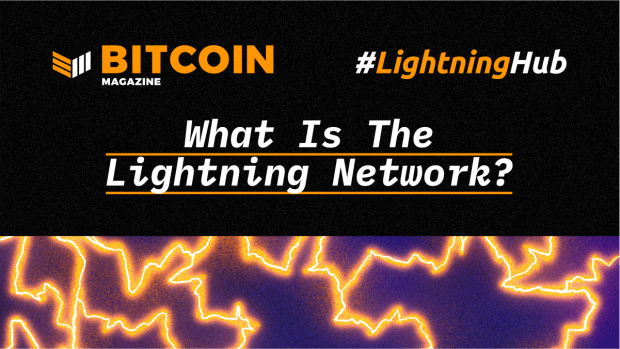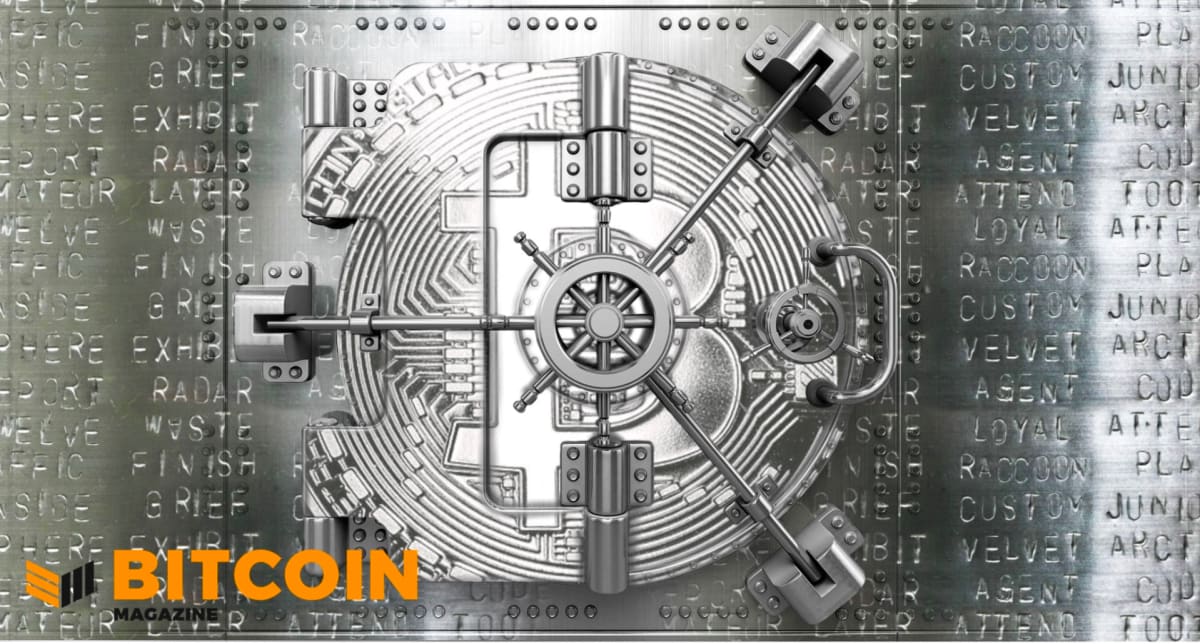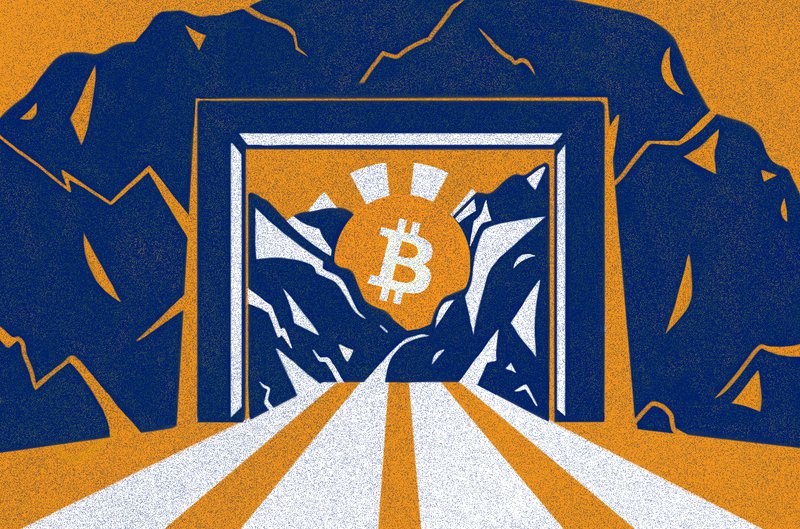What is the Lightning Network?
Learn more about the Lightning Network.

The Lightning Network is a Layer 2 protocol for Bitcoin, specifically designed for cheap, fast and private payments. As an overlay network consisting of payment channels, Lightning payments are not recorded on Bitcoin’s blockchain — only channel-funding transactions and channel-closing transactions are. This effectively means that many Lightning transactions can be settled with much fewer on-chain Bitcoin transactions.
For more information on the network that the Lightning Network is built on, visit our “What Is Bitcoin?” guide.
By settling many Lightning transactions into much fewer Bitcoin transactions, users and miners on the Bitcoin network are relieved of having to validate and store all of these Lightning transactions. As perhaps the main benefit, this translates into lower fees for Lightning users. Furthermore, Lightning users no longer need to wait for confirmations on the Bitcoin blockchain: Transactions are instant.
Finally, as an added bonus, the fact that transactions aren’t recorded on the blockchain (in combination with a Tor-like routing algorithm for Lightning payments) means that Lightning users generally enjoy some extra privacy.
To learn more about how The Lightning Network works, visit our standalone guide.
Who Created the Lightning Network?
The Lightning Network was first proposed in 2015, in the Lightning Network white paper (full title: “The Bitcoin Lightning Network: Scalable Off-Chain Instant Payments”), authored by Joseph Poon and Thaddeus Dryja. Various design aspects of the Lightning Network date back even further than the white paper.
Since then, several teams have developed different Lightning implementations, including Blockstream’s c-lightning, Lightning Labs’ lnd and Acinq’s Eclair. All implementations are compatible through the BOLT protocol specifications.
The Lightning Network is still being improved every day; it’s a work in progress.
For more on the Lightning Network’s creation, read our article “The History of Lightning: From Brainstorm to Beta”
What Are Sats?
Sats, or “satoshis,” are the smallest denomination of bitcoin that is recorded on the Bitcoin blockchain. One sat represents 0.00000001 BTC, or 1 one-hundred-millionth of a bitcoin. The name is taken from the pseudonymous creator of Bitcoin, Satoshi Nakamoto.
For more information about Satoshi Nakamoto, read our guide on Bitcoin’s creator.
Because bitcoin has risen in value to the point that mere fractions of BTC are enough to pay for many goods and services, for regular investments and for microtasking payments, BTC is often denominated in sats. The use of sats also allows users to make transactions worth less than 1 U.S. cent.
The hashtag #StackingSats is used on social media in reference to habitual accrual of satoshis. And earning platforms like Carrot pay out rewards in sats for the completion of tasks.
For more information on sats, visit our standalone guide.
How Do Lightning Network Fees Work?
On Bitcoin, fees are paid to miners to include transactions in a block. But the Lightning Network itself doesn’t have miners, nor blocks. (Although, as a Layer 2 solution, it ultimately does depend on miners and blocks, of course; without miners and blocks, there would be no Bitcoin and, therefore, no Lightning Network.)
Instead, fees are paid to Lightning nodes on the network that do the jobs of providing liquidity (funded channels) and forwarding transactions. Some nodes will charge more than others, but fees are generally low, and since anyone can set up a competing node, competition will probably keep fees fairly low.
Paying fees is typically abstracted away in the wallet and not something you need to worry about too much. Unlike on-chain transactions, there is no risk of including a fee that is too low — your transaction either goes through immediately or it does not go through at all.
If you’d like to earn fees yourself, you will have to set up a Lightning node, ideally one that is well connected with many other nodes on the Lightning Network, and with a lot of liquidity in different channels. It also helps to have this node online as much as possible.
How To Set Up A Lightning Network Node
Like a Bitcoin node, a Lightning Network node is software that connects to the network to send and receive BTC through Lightning from other nodes. In essence, the Lightning Network is made up of these nodes.
To really participate in the Lightning Network, users should consider running their own nodes. You don’t have to run a node to send BTC through Lightning Network channels, but running your own node helps the network grow, increases liquidity and might help you turn a profit (as explained below).
To read more about setting up a Lightning Network node, check out our full guide.
And to learn about how to turn a profit from running a Lightning Network node, visit our guide on node profitability.
What Are Lightning Network Wallets?
Bitcoin wallets are the programs or apps that allow users to send and receive BTC. Bitcoin wallets that are enabled to function with the Lightning Network allow users to make and receive Lightning payments.
To read more about Bitcoin wallets, visit our full guide.
As with bitcoin wallets in general, there are different versions of Lightning-enabled wallets, which each have their own unique properties and tradeoffs. Desktop Lightning wallets, for instance, may be someone’s preferred choice because they want to check in on their channels frequently. But the Lightning Network is designed to facilitate relatively small BTC transactions in the first place, and many users do not emphasize full node security. For many, mobile Lightning wallets are the preferred choice, even though it’s difficult to host a full node on a mobile device, because they are the most convenient.
How Do I Set Up a Lightning Channel?
To set up a Lightning channel, you need to run a Lightning node or have a Lightning wallet. Popular options include c-lightning and lnd (nodes) and Eclair, Zap and the Lightning App (wallets). Once this is set up, you can set up a payment channel with another Lightning node or wallet through a unique code corresponding to that node. How this is done exactly differs slightly from one solution to the other.
Once set up, you can transact through the channel and with the rest of the network for as long as channel funds allow. Depending on your setup, you can also forward transactions for other users and possibly earn fees.
Can I Send or Receive Lightning Payments Without Opening My Own Channel?
Strictly speaking, you need to have at least one payment channel open to send or receive Lightning payments. That said, if for some reason you don’t want to open a Lightning channel (yet), there are some ways around it.
For example, some Lightning wallets — like Blue Wallet — offer custodial solutions. This essentially means that when users receive payments, it’s actually the operational team behind the wallet that received the payment on behalf of them. The funds can be withdrawn by the wallet user, but until then it’s really controlled by the Blue Wallet team. This has the benefit that users can start accepting payments immediately, but it has the obvious downside that the users have to trust the wallet team to let them withdraw funds when they choose to.
Alternatively, a service like Submarine Swaps lets users make payments without having a Lightning channel open. Instead, users send a regular, on-chain transaction to the service, which then forwards the payment as a Lightning payment to the intended recipient. While these types of payments can be trustless — meaning the service provider can’t back out of forwarding the payment — it does mean that users need to pay on-chain fees and an additional fee for the service on top
What Is Wumbo?
Wumbo is a Lightning implementation developed to remove a limit to the amount of BTC that can be held in a Lightning channel (originally limited to 0.16777215 BTC) and a cap on how large individual payments can be. These limits were first put in place because of the risk associated with the Lightning Network when it was a brand new and relatively untested technology. For a payment channel to circumvent the caps via wumbo, users on both sides must signal their desire.
The development was named after a term coined in an episode of the cartoon SpongeBob SquarePants, in which the character Patrick Star defines the word “wumbo” by using it in a series of examples: “I wumbo, you wumbo, he, she, me: wumbo,” he says.
The word was applied to the Lightning development at a November 2018 summit, seemingly because that quote implies the type of mutual consent required by the agreement to exceed the original channel and payment caps. However, direct quotes and ideas from this summit were not allowed to be tied to specific individuals, per the summit’s rules to encourage the free exchange of ideas.
“If both sides of a new channel agree to wumbo each other by setting ‘option_i_wumbo_you_wumbo,’ they can build channels with capacity higher than 167.77216mBTC,” as Lightning developer ZmnSCPxj explained to the Lightning Dev mailing list at the time. “A node that advertises ‘option_wumborama’ allows any node to build channels with capacity above the limit. Please blame one of the persons attending the [second Lightning Development Summit] for this term.”
The Eclair and c-lightning clients adopted wumbo support in early 2020 and LND started supporting wumbo channels in August 2020.
How Does Lightning Scale Bitcoin?
The Lightning Network was originally proposed as a solution to address “the Bitcoin blockchain scalability problem,” as the network white paper phrased it. As the authors described, Bitcoin is unable to serve effectively as the world’s payment platform because it broadcasts all transactions to all network participants.
“If each node in the bitcoin network must know about every single transaction that occurs globally, that may create a significant drag on the ability of the network to encompass all global financial transactions,” per the white paper. “It would instead be desirable to encompass all transactions in a way that doesn’t sacrifice the decentralization and security that the network provides.”
As the authors went on to point out, a traditional payment network like Visa can manage 47,000 transactions per second, while Bitcoin was supporting fewer than seven transactions per second with its 1 MB block limit. Their proposed solution to this scaling problem was the Lighting Network, a layer two protocol that allows users to transact with BTC while only recording these transactions on the Bitcoin blockchain when channels are funded or closed.
To read more about scaling Bitcoin with the Lightning Network, visit our standalone guide.
What Are The Risks With The Lightning Network?
While the Lightning Network offers massive scaling potential to Bitcoin and an alternative to the world’s traditional payment systems, it is still a relatively new technology with minor adoption. It’s possible that all of the risks that could come as a result of massive Lightning adoption have not yet been identified. And, even at this nascent stage, it’s important to acknowledge some of the technology’s shortcomings.
Because the Lightning Network has relatively few operational nodes, it’s possible for funds to become concentrated on certain nodes — a reality that poses a centralized risk that should not occur for the Bitcoin network. If a node with a high concentration of funds were to try and cheat many users at the same time, it could cause significant disruption to the network.
Also, as noted above, these transactions are relatively slow because they are broadcasted across the entire network as a feature of Bitcoin’s public and decentralized ledger. Essentially, the Lightning Network improves speed by allowing for transactions within channels that are not broadcasted to the entire network, which could be a security tradeoff in and of itself. This opens up a potential opportunity for bad actors within these channels.
“Say Molly has a channel with Angela and they each deposit 10,000 sats into it, for a total of 20,000 sats,” per a scenario described by Bitcoin Magazine in 2019. “During the channel’s lifetime, Angela pays Molly 5,000 sats, bringing the total to 15,000 sats for Molly and 5,000 for Angela. But suddenly, for whatever reason, Molly is unable to access her Lightning wallet (maybe her node is offline, her computer has a malfunction or she’s on vacation), so Angela decides to be a bit mischievous — when it comes time to broadcast the final state of the channel to the blockchain, she decides to broadcast the first state of the channel (the original 10,000 sat balances that they both deposited) to cheat Molly out of what she was paid. Since Molly is on a remote island in the Gulf of Mexico and not at her computer, she can’t check Angela’s bad behavior and verify the actual state of the channel, so she loses 5,000 sats.”
What Are Lightning Network Watchtowers?
To mitigate this risk, Lightning Network developers have introduced a technical feature called “watchtowers” that monitor channels.
When channels are updated, an encrypted “blob” containing a secret signature corresponding to the user’s public key is sent to the watchtower. Simultaneously, the watchtower receives half of the transaction ID for the channel’s previous state, which serves as the decryption key for the blob. The watchtower stores these blobs and decryption keys so that if a bad actor attempts to broadcast an older channel state to the mempool, it can recognize that the transaction ID matches another transaction ID half it holds. With both transaction ID halves, the watchtower can decrypt the corresponding blob and then deny the bad actor and send the funds to the honest channel user’s wallet.
Read more about Lightning Network watchtowers in our article here.
How Much Bitcoin Is On Lightning?
The exact amount of BTC that’s held within channels on the Lightning Network at any given time is difficult to estimate. As BitMEX Research explained in its 2020 series on the Lightning Network, there are different types of transactions that can be identified differently through blockchain data, and not all are very clearly attributable to Lightning channels.
To summarize one part of its report, there are three Lightning Network transaction types that can be analyzed via public blockchain data: opening a channel, “cooperative” channel closures and “non-cooperative” channel closures. A “non-cooperative” Lightning channel closure occurs when a Lightning Network node initiates a payment channel closure without directly communicating with the node that the channel is linked to. Meanwhile, a “cooperative” channel closure means that both channel participants have agreed to close the channel and settle the final state of the channel onto the blockchain.
Opening A Channel
For public Lightning channels, it is possible to identify opening transactions from data obtained from a public Lightning Network node. Also, opening transactions may be identified later on, when the transaction output is redeemed during channel closing, if that closing is “non-cooperative.” But, per BitMEX Research, it may not be possible to reliably identify all channel-opening transactions from blockchain data alone.
A Non-Cooperative Closure
It’s difficult to tell with certainty that non-cooperative Lightning channel closures are tied to Lightning when analyzing blockchain data, according to BitMEX Research’s report. However, the report noted that these closures can be directly identified on the blockchain with reasonable certainty, and that these transactions can be characterized more accurately when the output of the transaction is redeemed following the channel closure.
A Cooperative Closure
BitMEX Research noted that it’s possible to scan the Bitcoin blockchain for all spends redeemed using a 2-of-2 multisignature script, which would suggest that it’s a Lightning transaction, but this wouldn’t provide certainty. Because of this, it seems impossible at this point to definitely identify cooperative channel closures on the blockchain and to get a precise accounting of Lightning activity.
Another 2020 report by BitMEX Research estimated that 72.2 percent of Lightning channels identified with a “sweep transaction” analysis methodology were public channels, while 27.8 percent were private.
However, a general measure of the Lightning Network capacity is publicly available, via Bitcoin Visuals and other data aggregators. This is a measure of the cumulative bitcoin capacity across all publicly known Lightning Network channels and, as of the time of this writing, the amount of BTC that can be confirmed as being transacted on Lightning channels has grown rather steadily since the network was introduced.
In addition, there is likely much more bitcoin on the Lightning Network that cannot be publicly identified as being held in Lightning channels.









